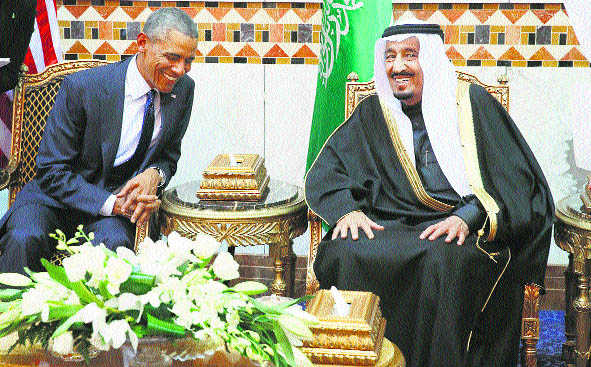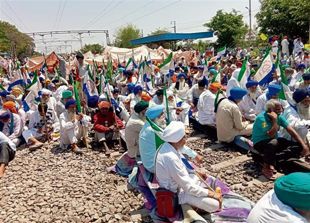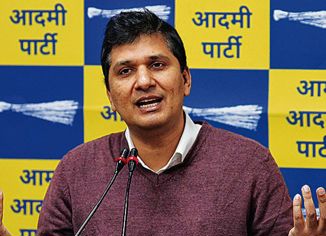
Riyadh has been left feeling that it has become a less vital partner of the US.
S Nihal Singh
THE Shia-Sunni schism in Islam is an old one but its modern version under the leadership of Saudi Arabia and Iran is a toxic mix. These two Middle East powers have their national and geopolitical interests and in the context of the changing world and the United States’ actions, an explosion was waiting to happen. It happened in the shape of the hanging by Riyadh of a prominent Shia cleric, Nimr al-Nimr. The resulting ransacking of the Saudi embassy in Tehran led to the breaking off of diplomatic relations between the two.
The contours of the longstanding alliance between Saudi Arabia and the United States, with Washington crowning Saudi Arabia as the leader of the Sunni world, changed for two reasons. American dependence on Saudi oil decreased considerably due to its domestic shale resolution and its desire to bring in Iran out of the cold, following the Islamic revolution, left Riyadh with the feeling that it had become a somewhat less vital partner.
Indeed, the US had assiduously cultivated Iran in resolving the crisis posed by its nuclear programme for the simple reason that it needed Tehran to tackle regional problems, in particular the Syrian civil war. Thanks in particular to American actions, Iran’s influence had grown. The US invasion of Iraq had ensured that a minority Sunni leadership capped by Saddam Hussein had been transformed into a Shia-majority dispensation. Tehran’s arc of influence now stretches across the region from Iraq to Bahrain’s majority Shia population (ruled by a Sunni monarchy), the Houthis in Yemen and the influential Hezbollah movement in Lebanon.
On the other hand, the new ruler of Saudi Arabia, King Salman bin Abdullah Al Saud and his activist son, were pursuing a more robust foreign policy and intervened militarily in neighbouring Yemen with the Houthis capturing the better part of the country. The Saudis had earlier sent its forces to Bahrain to thwart the majority Shia revolt against the minority ruler in the wake of the Arab Spring. Riyadh on its part was also expressing its resentment of American actions in the region by going into Yemen.
Thus the ideological divide is accentuating national conflicts of interest between Saudi Arabia and Iran. And as fate would have it, oil, which made the two leading regional powers and others immensely rich, fell drastically leading to austerity measures in the Saudi kingdom. With Iranian oil due to enter the international market following the projected lifting of sanctions flowing from the nuclear agreement, the Saudis have refused to cut their production to preserve their market share.
Where then do the Middle East and the world go from here? Bringing peace to Syria was difficult enough, but finally the US was able to bring both Saudia Arabia and Iran around the same table, in addition to Russia. The new tensions between these two countries will make the US task more difficult.
The Middle East has a long history of European colonial rule, a burden assumed by the US after World War II. But to everyone’s regret, the US has been following piecemeal policies of which the most disastrous was the invasion of Iraq. And when the Hosni Mubarak era tottered in the wake of the Arab Spring, Washington briefly flirted with the result of the country’s first free election. After a year, the coup, with popular support, brought the army back to power, apparently to US relief. After a symbolic gap, US military aid to Egypt is in full flow. It has got accustomed to dealing with dictators and monarchs across the region.
Saudi Arabia’s fear is that with Iran’s seemingly expanding role and an unreliable Washington, it must gather its forces. Its decision to break off diplomatic relations with Iran was followed by a few other Sunni kingdoms while the United Arab Emirates announced downgrading of its relations with Tehran. These are supporting measures to show solidarity, rather than long-term cures.
Saudi Arabia’s own situation is not a rosy one. The military intervention in Yemen is mired in a stalemate and the need to tighten its belt strikes at the heart of the unwritten pact with its citizens, that they forego their fundamental rights in return for a subsidised life. Besides, Iran as a regional power is here to stay.
What makes the future hard to predict is the nature of the churning taking place in the region, with outside powers still playing an outsize role. Israel is America’s true proxy although it tries to subvert US interests on occasion and refuses to look at the long-term consequences of living as a colonial power in the 21st century. In the Arab world, as the failure of the Arab Spring revealed, changing the power structure from dictatorships to democracy is a distant prospect.
Thus the existing power structures make the Shia-Sunni rift even more intricate. More and more towns and cities in Syria, for instance, have become concrete jungles and whether it can stay as one country is an open question, with the minority ruling Alawites of President Bashar al-Assad occupying a distinct region and the majority Sunnis elsewhere, with the Syrian Kurds gaining traction. Iraq is already vaguely split among Shia, Sunni and Kurds. And Turkey, another regional power, is locked in mortal combat with Kurds whose separatist leader Abdullah Ocalan is in jail and his party, the PKK, is fighting the Turkish army after the breakdown of a two-year-long truce last summer.
Turkey’s President Recep Tayyip Ordogan is an ambitious man and even as his own problems in supressing Kurds grow, the European refugee crisis with millions of mainly Syrian refugees flooding the continent has given him a new relevance. He has already pocketed some $3 billion in aid to try to stem the refugee flow and has extracted promises of speedier clearances in achieving his ambition of European Union membership.
One tactic of resolving complicated problems is to make them more complicated. This would seem to apply to the Middle East. Some historians have consoled themselves with the thought that Europe in earlier centuries was as susceptible to divisions and wars as the Middle East is today. For people living today, that is scant consolation.



























